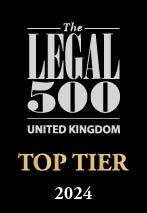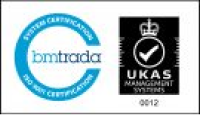The Terminology of Domestic Abuse, Part 2, from Fact Finding Hearings to Scott Schedules and Findings Documents

Fact Finding Hearings
As detailed in Part 1 of this article (posted last month), the amended Practice Direction 12J places an increased focus on issues of domestic abuse, it widened the definition of domestic abuse to include coercive, controlling and threatening behaviour. In cases where such issues are raised, judges should not ignore those allegations and should determine the extent to which they are relevant in deciding what Child Arrangement Orders to make. Frequently this will require a separate Fact Finding Hearing. A Fact Finding Hearing is a type of court hearing that considers the evidence surrounding allegations, and the Court will make a decision as to whether alleged incidents did or did not happen. It is for the person making the allegations to prove that they are true.
Where the Court considers that a Fact Finding Hearing should take place in family cases, Practice Direction 12J Para 19 states the Court must give directions as to how the proceedings are to be conducted to ensure that the matters in issue are determined as soon as possible, fairly and proportionately, and within the capabilities of the parties. In particular it should consider:
- what are the key facts in dispute;
- whether it is necessary for the fact finding to take place at a separate (and earlier) hearing than the welfare hearing;
- whether the key facts in dispute can be contained in a schedule or a table (known as a Scott Schedule) which sets out what the applicant complains of or alleges, what the respondent says in relation to each individual allegation or complaint; the allegations in the Schedule should be focused on the factual issues to be tried; and if so, whether it is practicable for this Schedule to be completed at the first hearing, with the assistance of the Judge
Scott Schedule
Scott Schedules are defined on the HM Justice website[i] as a vehicle to identify precisely the questions that a judge has to decide. Scott Schedules are often used in cases where there are several complaints of bad workmanship in civil cases. The Schedule is a table. In the first column after the item number, the Claimant sets out each complaint about the workmanship (or in our case behaviour) separately. In the next column, the Defendant/ Respondent sets out his/her response to each individual complaint.
Scott Schedules and Fact Finding Hearings – Comment
It is my view that Scott Schedules are outdated:
- They are done in landscape format, which is difficult enough to use in a hard copy bundle but may be even more problematic in electronic format.
- Quite often, when drafting the document, the applicant’s solicitors will ‘cut and paste’ allegations contained in the application form that commenced the legal proceedings. Often these allegations are hastily drafted and were not intended to form part of a formal ‘pleading ‘(a pleading is a formal written statement of a party’s claims or defences to another party’s claims in a civil action. The parties’ pleadings in a case define the issues to be adjudicated in the action.)
- Because of the columns on the schedule, sometimes dates slip in preparation against the detail of the allegation causing confusion in the Court.
- Despite the fact that control and coercion type of behaviour is usually a persistent course of action by the abuser which needs to be evidenced in some detail by a number of incidents that have taken place, Judges often still limit the number of allegations to be included in the schedule. Many practitioners get round this by putting a small number of headings and then demonstrating the controlling act by providing subheadings.
In cases I have dealt with, I have found it easier to focus the Court’s mind by drafting a findings document to supplement the Scott Schedule. I have drafted the findings sought so that it related to how the child/children would suffer. Such a findings document (prepared for the mother in a control/coercion case) may look like this:
- It will be submitted on behalf of the mother that the father is antagonistic and unsupportive of the mother. In order to establish this conduct the mother seeks the following findings:
- The child (name) is at risk of suffering significant emotional harm through the antagonistic, unsupportive, argumentative and deliberate undermining of the mother by the father.
- The father has conducted litigation unreasonably in 4 applications over a 4 year period often changing the nature of his application prior to the Court hearing
- The father has used the communication book as an instrument in his unreasonable conduct towards the mother.
- The father has used social media to intimidate and abuse the mother, deliberately to undermine and distress her; the mother’s health is being significantly damaged by the behaviour of the father who has by a deliberate or reckless course of action, unhelpful communication, a deliberate disregard for maternal routine, or a deliberate undermining of the mother’s parental responsibility impacted upon the mother’s health and put the child at risk of emotional harm. The father’s behaviour seeks to oppress, harass and intimidate the mother in order to pressurise her, unreasonably influence her or deliberately harm her.
- The father ‘gaslights’ the mother, persistently manipulating and brainwashing her, which causes the victim to doubt herself and ultimately lose her own sense of perception, identity and self-worth.
- The father uses financial abuse, using or misusing money as a method of pressurising the mother.
- The relationship between the parties is such that the ongoing difficulties in the parties’ relationship will ultimately impact on the child’s health and wellbeing.
Practitioners who have experience in both private law and public law proceedings will note the similarities with the threshold document drafted by Local Authorities in care proceedings. As in public law proceedings, the person making the allegations has to prove the allegation on balance of probabilities. It isn’t for the accused to establish something that is alleged didn’t happen.
I feel the Scott Schedule is outdated. A findings document, it is suggested, makes the proceedings more child-focussed and allows the victim to submit how the behaviour they have been subjected to, either during the time that they lived with the abuser or alternatively after they separated has either impacted on the child or alternatively could be a risk to the child. Each allegation in the findings document would have a reference to where the evidence is within the bundle. It would avoid cases where 30 or 40 allegations in a Scott Schedule need a decision.
[i] https://www.justice.gov.uk/courts/procedure-rules/civil/standard-directions/general/scott-schedule-note










